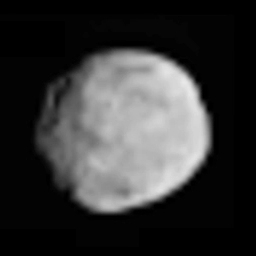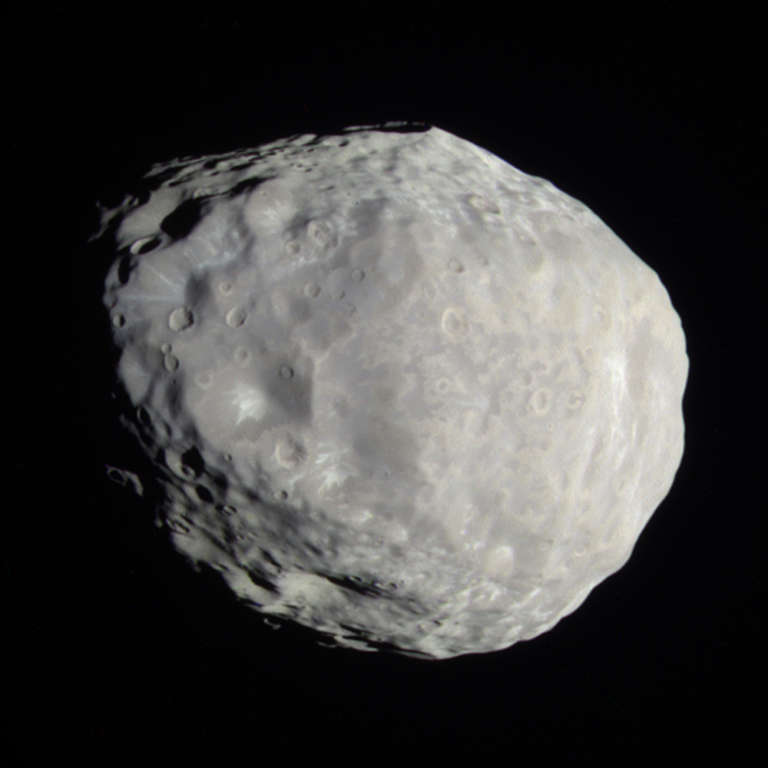Emily Lakdawalla • Jun 23, 2011
Vesta looks pretty battered
There was a press briefing on Dawn today at NASA Headquarters, and there are new pictures! Here's what Vesta looked like as of three days ago, when Dawn was only 189,000 kilometers away. The images appear blurry because they've been magnified by a factor of five or six, by my estimate:

Vesta is still fuzzy but as we get closer and closer we're beginning to see some pretty surprising topography at the terminator. (I use the word "terminator" a lot and should probably define it more often: it's the day/night boundary, the boundary between sunlit and dark areas of a world, and because the sunlight slants onto the landscape at that location, topographic features are thrown into stark relief by their shadows.) At least, Iam surprised by the amount of topography visible there. It looks like Vesta is as lumpy as much smaller roundish worlds, like, say, Janus, which is about a third the size of Vesta. Of course, Janus is made of ice, while Vesta is made of rock, but still, seeing so much shape from shadow surprises me.

The animated GIF above was pulled out of this neat, much longer animation containing lots of approach images:
Other than that, and another graphic that shows that the spectrometer appears to be working, there wasn't much news from the press briefing. This is, in itself, good news, because anything unexpected at this point would likely mean bad news about the spacecraft. Every space mission has one of these kinds of press briefings that are intended to bring up to speed those press who haven't been paying attention during the long cruise. So they talked a lot about the plans for operations at Vesta (which Marc Rayman has explained to you in much greater detail, and which I summarized here). If you've been paying attention all along, there wasn't much news from the briefing.
Those of you who have been clamoring for more images from Dawn ought to read my summary; they only take optical navigation images 24 times during the 3-month approach period, less frequently while distant, so they only have new images about once a week right now anyway.
But we're fast approaching Vesta, and the world is getting bigger, and the pictures getting more frequent and more detailed, and I can't wait to see more!
Support our core enterprises
Your support powers our mission to explore worlds, find life, and defend Earth. You make all the difference when you make a gift. Give today!
Donate

 Explore Worlds
Explore Worlds Find Life
Find Life Defend Earth
Defend Earth

